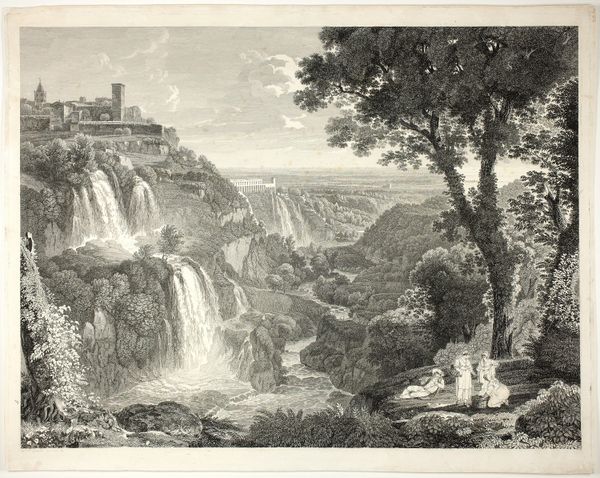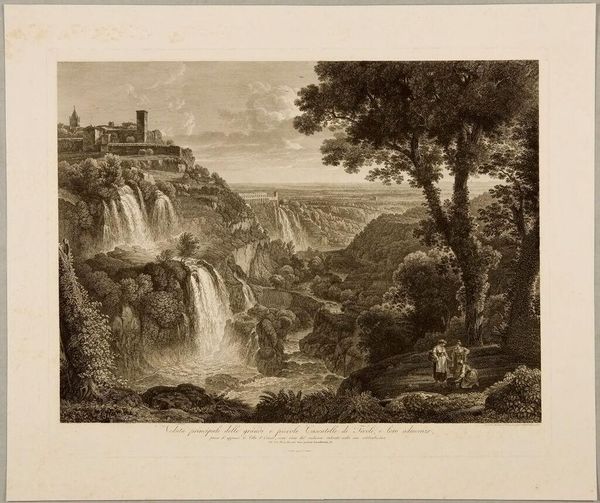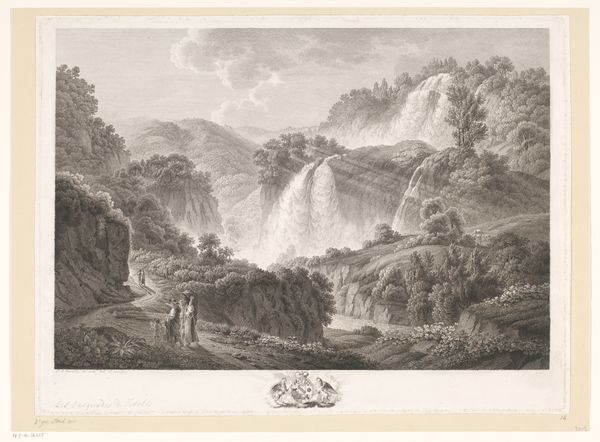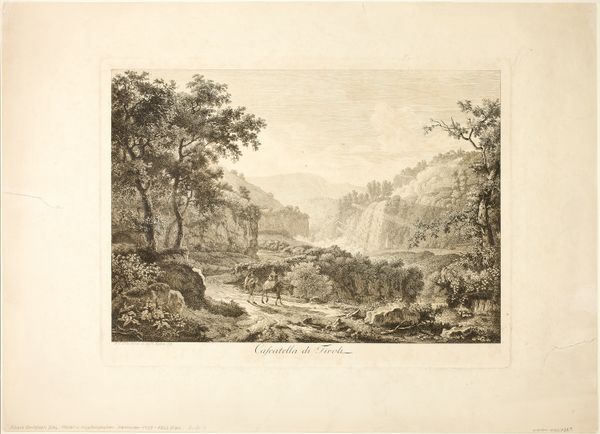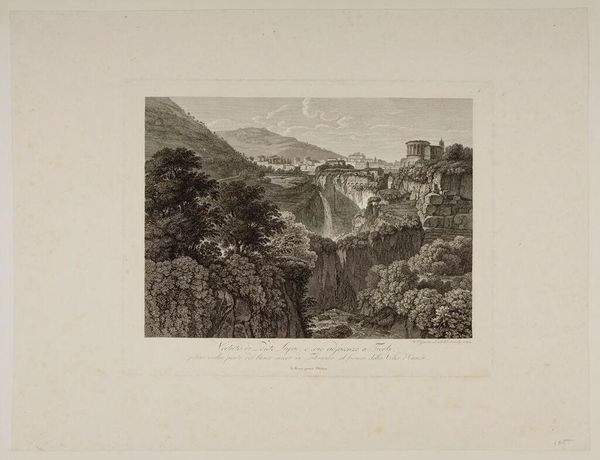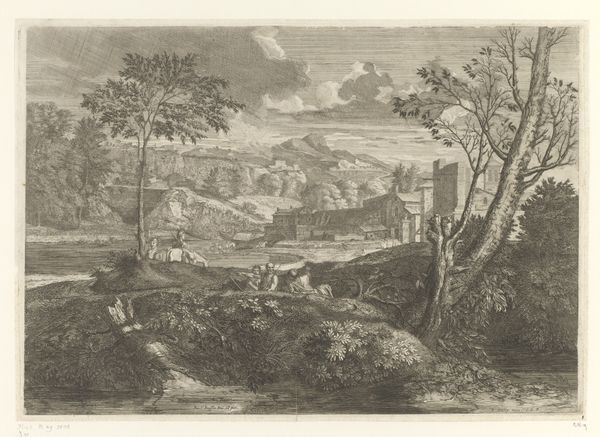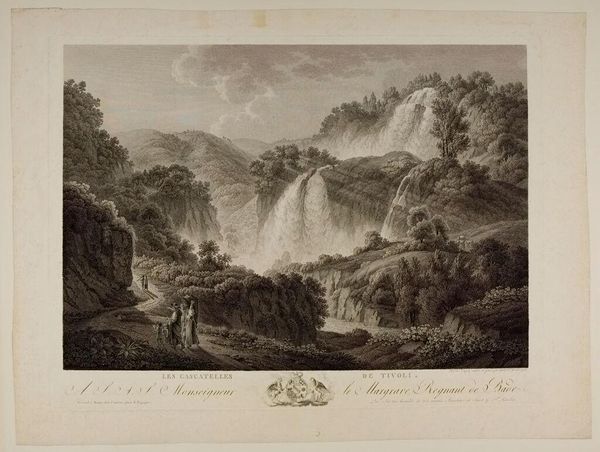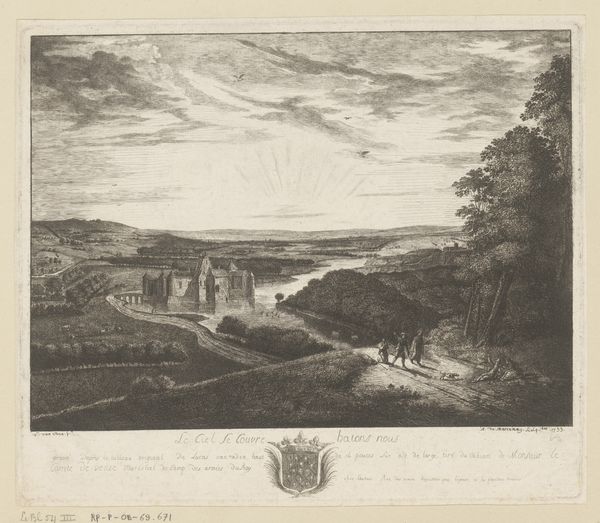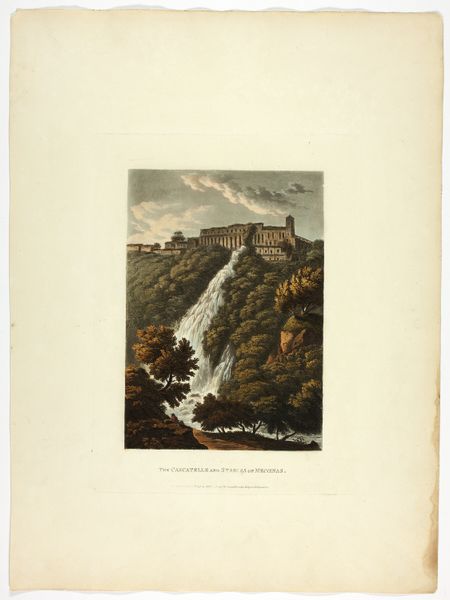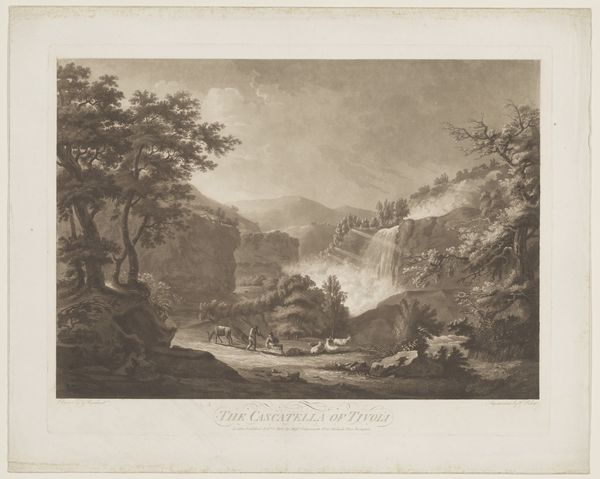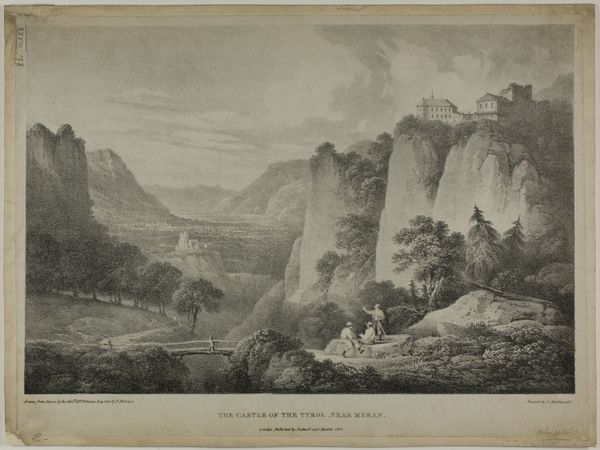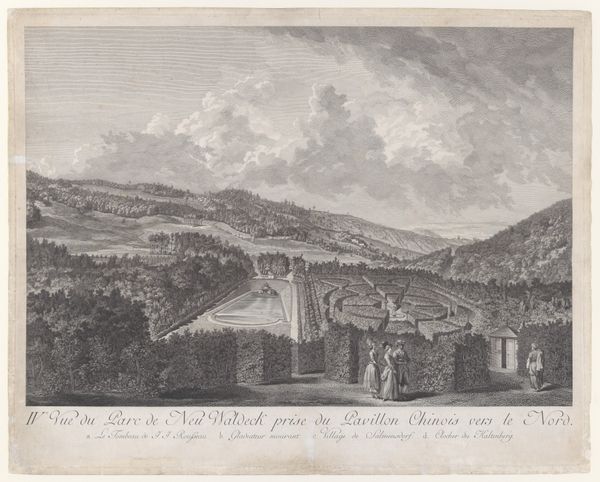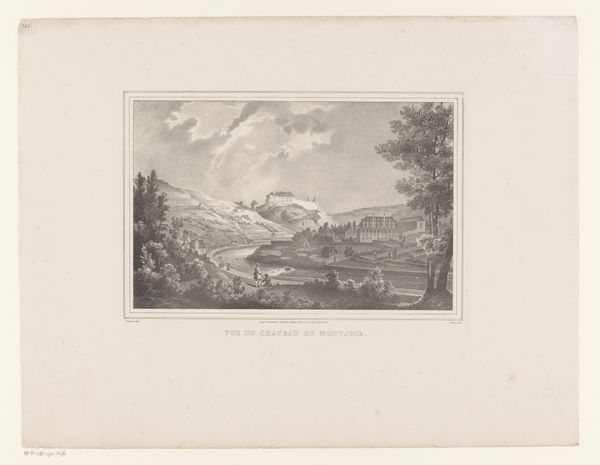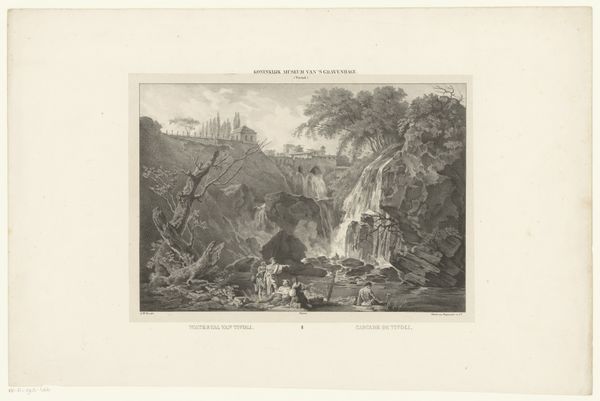
engraving
#
neoclacissism
#
natural shape and form
#
landscape
#
line
#
cityscape
#
engraving
#
realism
Dimensions: height 435 mm, width 582 mm
Copyright: Rijks Museum: Open Domain
Curator: It's fascinating how deeply the engraver, Friedrich Wilhelm Gmelin, transports us to Italy with this 1792 work, "Landscape with the small waterfalls of Tivoli." What's your immediate impression? Editor: There's a sublime stillness despite the cascades of water. It’s an idyllic scene, a pastoral fantasy rendered with such meticulous detail. But that high vantage point and those carefully placed buildings…there's something more to it. Curator: Precisely! Gmelin situates Tivoli within a larger narrative. Think about the rise of the Grand Tour in the 18th century, where wealthy Europeans, primarily men, would travel to sites like this to immerse themselves in classical culture. Editor: Ah, the "civilizing" influence of art and architecture! It raises questions, doesn't it, about who gets to participate in this experience of beauty and whose perspective is centered? The focus here is squarely on the leisured class, able to admire from afar. Curator: Absolutely. This wasn’t simply about aesthetic appreciation. It was also about consolidating class and asserting a particular vision of European cultural superiority through Neoclassicism's revival of Greco-Roman artistic and architectural motifs. The very act of creating and owning such landscapes reinforced power structures. Editor: So the landscape isn't just a passive object of beauty. It's actively involved in constructing a social and political reality, subtly conveying the assumed authority of its intended audience. The built environment really does a lot to shape natural land in that sense, huh? Curator: And don't forget the technical skill! The detail Gmelin achieved with engraving... he really created the three-dimensional form here in ways that almost seem at odds with the black and white. Editor: This piece reminds us that representations of landscape aren't innocent. They carry encoded messages about power, privilege, and identity. It is good food for thought, truly. Curator: Indeed, revisiting these historical contexts forces us to critically examine the ways art perpetuates or challenges the societal norms that remain embedded today.
Comments
No comments
Be the first to comment and join the conversation on the ultimate creative platform.
